
For Everglades, magic is in the water
FLORIDA CITY, Fla. — An anthropologist named Lauren Eiseley once said, “if there is magic on this planet, it is contained in water.”
Long ago, the Everglades region was called the “ River of Grass,” by author Marjory Stoneman Douglas because of its healthy plant life and rich ecosystem. However, in recent years, the Everglades National Park water has been in great danger.
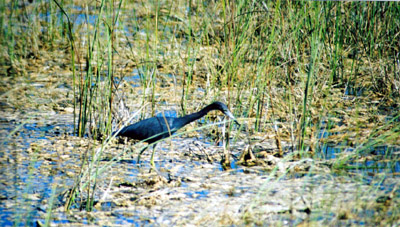 |
The marshy environment of Shark Valley in the Everglades is an ideal home for numerous types of birds (Staff photo). |
When canals were dredged, water was drained, and barriers set up and diverted, the structure of the free-flowing river was changed forever. Due to the changes made in the early 20th century, the large freshwater marshland that once covered 4,000 square miles has now either vanished or been polluted.
In South Florida, the population is increasing at an astonishing rate of 800 persons per day. Because of this, there is a scarce amount of fresh water that can be distributed to the Everglades, where it is desperately needed.
The Florida Dept. of Environmental Protection tried to pinpoint which contaminants were contributing to the poor water quality. They discovered that phosphorus, sulfate and methyl mercury were the strongest and most widely found pollutants.
Phosphorus is agriculturally derived and sugarcane plants have been the main culprits of carelessly releasing the contaminant. It causes eutrophication, which encourages the growth and decomposition of oxygen-depleting plants.
The lack of oxygen then causes the water to be unsuitable for animals. Phosphorus also kills off many native plants and allows cattails to grow. In 2002, the Audubon Advocate noted that the pollution coming from cropland is turning once healthy marshes into wastelands, at a rate of two and a half acres per day.
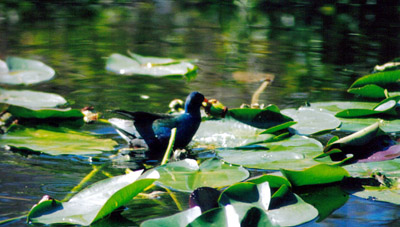 |
For birds to survive in the Everglades, they need fresh water (Staff photo). |
Methyl mercury found in Everglades water is hazardous to the fish and the humans that ingest the fish. As more mercury flows into the Florida Bay, more are at risk for health complications. According to the National Academy of Sciences, methyl mercury can result in “adverse effects in several organ systems throughout the life span of humans and animals.”
Although mercury levels have gone down significantly in recent years, many of the species at the top of the food web, such as bass and herons, concentrate the mercury in their bodies.
William Buffalo Tiger, former chief of the Miccosukee Indian tribe, was aware of the pollution. However, his awareness turned to worry when he observed several dead snakes near his land at Shark Valley. It was proof to him that the plant and animal life was dying in the Everglades.
The tribe was convinced that a pump in southwestern Broward County was dumping nearly 423,000 gallons of polluted runoff into the water every day. This runoff came from lawns in suburbia, farms and industrial yards.
The Miccosukees and an environmental group called Friends of the Everglades sued and took the South Florida Water Management District to court. The judge sided with the tribe. This paved the way for numerous plans to fix water quality issues.
Because of the Everglades Forever Act, farmers in the Everglades Agricultural Area now use Best Management Practices (BMPs). In this process, nutrients from the soil are taken out of the water before it leaves the farm and enters the canals leading to the Everglades. According to the South Florida water management experts, these BMPs have had a major success in lowering the levels of phosphorus.
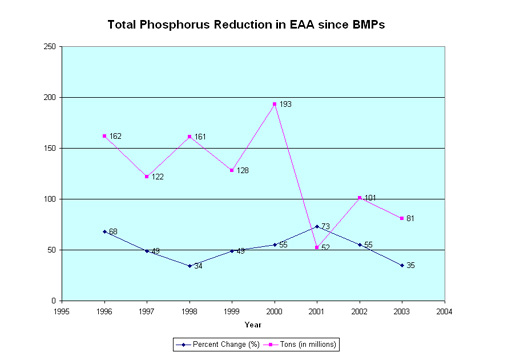
Source: South Florida Water Management District.
There were 162 tons of phosphorus observed in 1996. By 2003, there were 81 tons left in the EAA basin, a remarkable improvement.
Due to the increasing demand from both the government and environmentalists, the farmers have also paid a whopping $232 million to create Stormwater Treatment Areas (STAs). Thousands of acres have been set aside to build these fake “marshes,” which serve the purpose of carefully cleaning farm water.
The South Florida Environmental Report, released in 2006, tells about the progress made so far. Since the inception of the BMPs, there has been a 59 percent or greater reduction in phosphorus loads. In just one year, the Stormwater Treatment Areas prevented 189 metric tons of phosphorus from reaching the Everglades.
| Grasses grow tall with a supply of fresh water (Staff photo). |
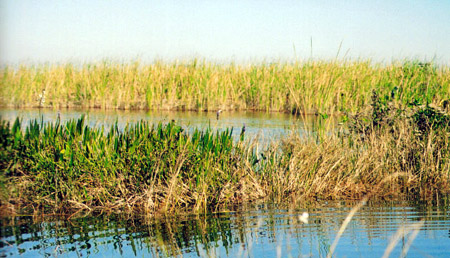 |
Gov. Jeb Bush and the state of Florida have initiated CERP, a comprehensive Everglades restoration plan. It is a framework to restore, protect and preserve the water resources of Central and South Florida. In 2006, estimates said the plan would cost $10.5 billion to carry out. It will take 30 years to complete.
The state and federal governments have entered into a partnership that intends to eventually restore the natural water flow. The plan includes many elements such as water preserve areas, treatment wetlands, management of Lake Okeechobee, reuse of wastewater and water deliveries to the Everglades.
While much progress has been made, Bush will be leaving office soon. He has been pushing for a later deadline to finish the cleanup. The administration has promised that the restoration plans will continue nevertheless.
Environmentalists are continuing the fight to save this unique and beautiful ecosystem.
“We believe we are on the right track to restore the South Florida ecosystem,” said John Outland, an environmental administrator for the Office of Ecosystem Projects.
The state has already invested $1 billion to acquire land for the CERP project, and another $1.5 billion to execute the other restoration projects. However, it will require more than money to replenish the area.
“It will take time and commitment to restore and protect America’s Everglades,” according to Outland.
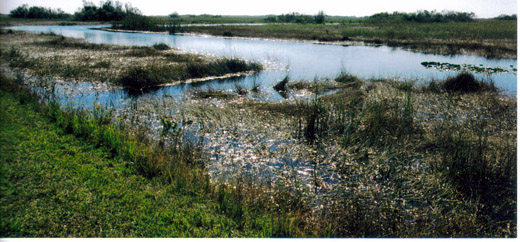 |
| Fresh water is critical to the life at Shark Valley in the Everglades (Staff photo). |

Comments are Closed